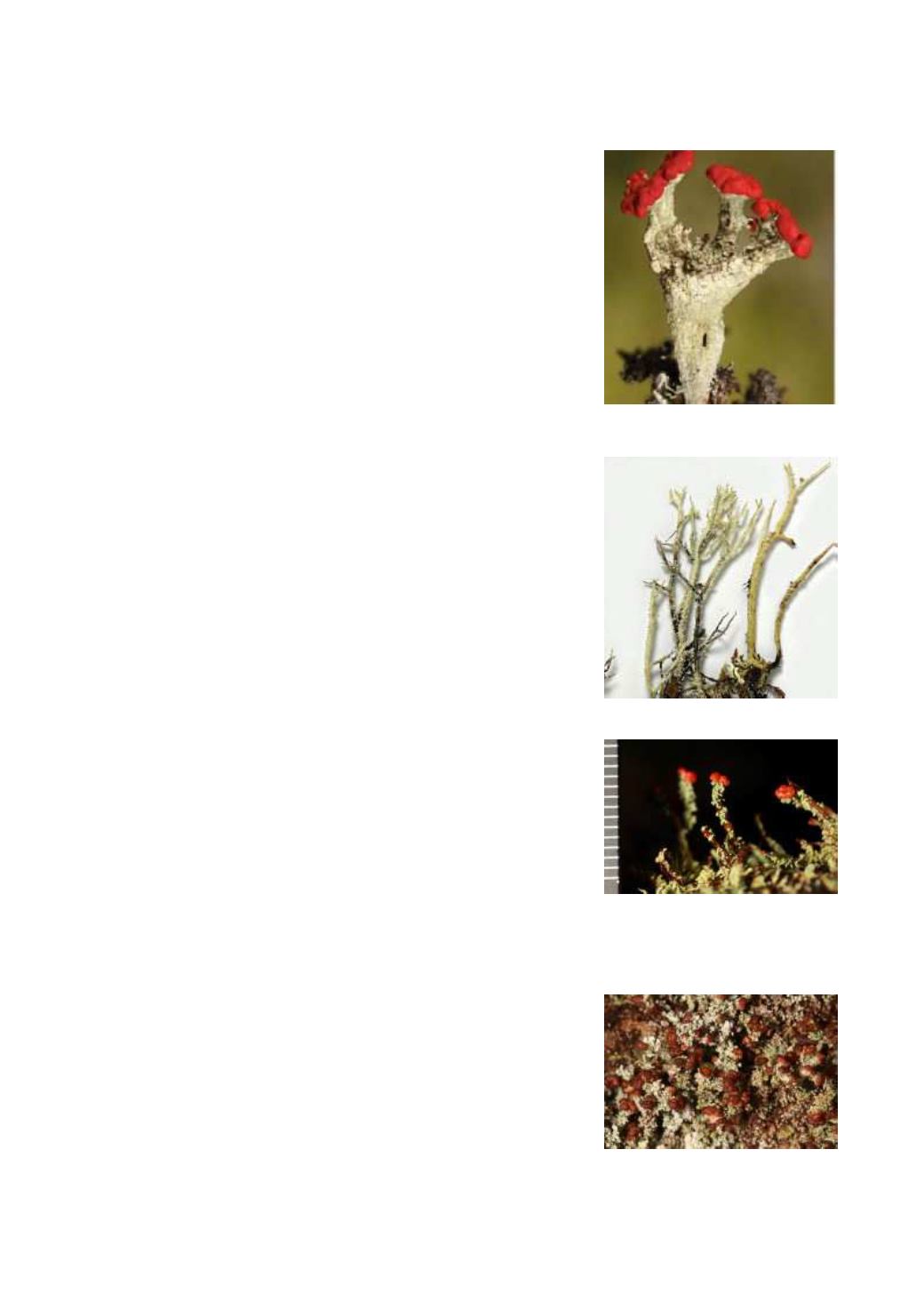
52
Cladonia coccifera
(L.) Willd.
Primary thallus squamulose, persistent, the squamules green on upper side,
white to yellow-orange on lower side, esorediate. Secondary thallus fruticose,
consisting of cup-shaped, greenish to yellowish grey podetia. The cups are wide,
gradually tapering to base, with a short stalk and a granulose cortex.
Conspicuous red pycnidia and/or apothecia are present along the margins of
cups. Photobiont: chlorococcoid. Spot-tests: K-, C-, KC+ yellow, P-, UV-. -
Mostly restricted to upland areas; some records from Sri Lanka may be due to
misidentifications.
Cladonia corniculata
Ahti & Kashiw.
Primary thallus squamulose, the squamules small, sorediate, brown on upper
side, paler beneath. Secondary thallus fruticose, consisting of pale greenish
yellow to grey podetia which are 2-6 cm tall, very slender, simple or sparingly
branched in the upper part, without cups, finely sorediate. Pycnidia and
apothecia pale brown. Photobiont: chlorococcoid. Spot-tests: K-, C-. KC-, P+
red. - Rare and localised (Nuwara Eliya), mostly restricted to humid high
elevation forests above 1000 m.
Cladonia didyma
(Fée) Vain.
Common name:
Southern soldiers
. - Primary thallus microsquamulose,
inconspicuous, esorediate, the squamules up to 3 mm long and wide, deeply
divided, olivaceous above, white below. Secondary thallus fruticose, consisting
of simple or sparingly branched, pale to dark greenish brown, fragile podetia
which are ca. 1 cm tall, corticate only at the base, often covered with isidioid
microsquamules mixed with cortical granules and granular soredia that are
unevenly distributed in upper parts, exposing the pellucid chondroid cylinder.
Apotecia and pycnidia bright red. Photobiont: chlorococcoid. Spot-tests: K- or
K+ yellow, C-, KC- (or C+, KC+ yellow if barbatic acid present), P- or P+
yellow. - Rare and localised, mostly restricted to humid high elevation forests
above 1000 m (Horton Plains and Knuckles montane forests).
Cladonia fruticulosa
Kremp.
Primary thallus squamulose, persistent, the squamules small to medium sized,
persistent, 2–4 mm long, 1–2 mm wide, slightly to deeply lacinate, occasionally
granular-sorediate on margins or below, cottony granulose-sorediate on lower
side. Secondary thallus fruticose, consisting of podetia which are 0.5–2(-4) cm
tall, 0.5–1.0 mm wide, simple or rarely branching, cup-bearing, often partly
squamulose, corticate or upper part ecorticate and partly granular-sorediate;
cups 0.5–4 mm wide, deformed to well defined, often with marginal cups.
Apothecia and pycnidia pale to dark brown. Photobiont: chlorococcoid. Spot-
tests: K+ reddish brown, C-, KC-, P+ deep yellow or red. - Very common,
mostly restricted to humid high elevation forests above 900 m, in sunny open
places, on soil (Horton Plains and Kikiliyamana tower area, Pidurutalagala montane forests).


